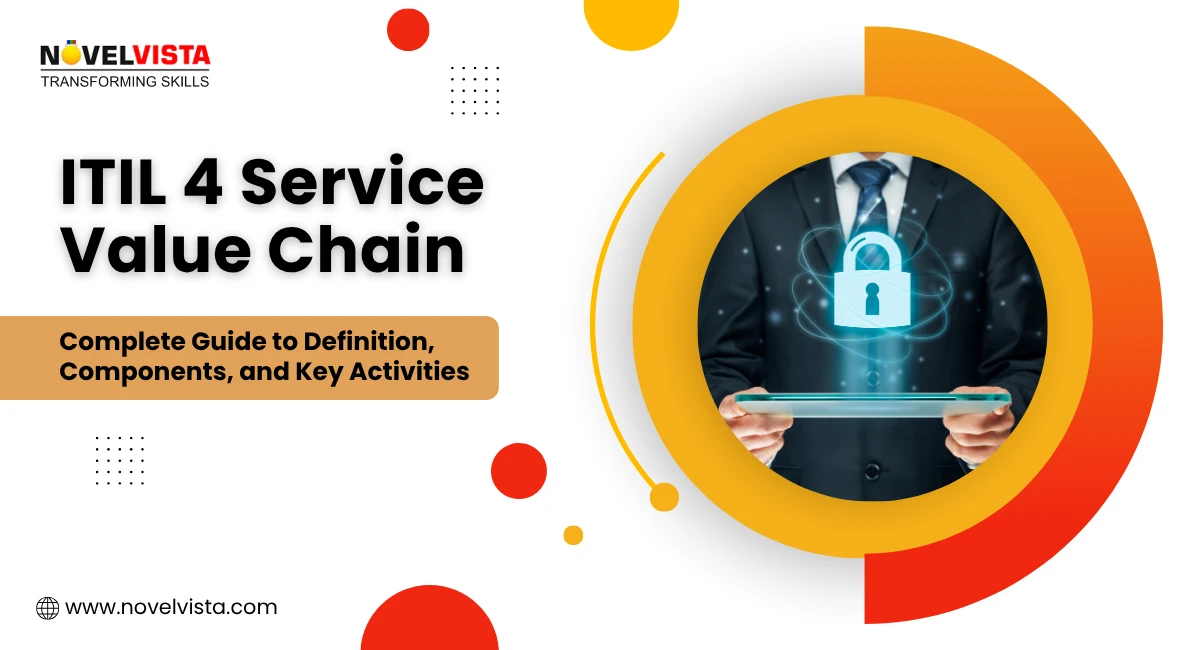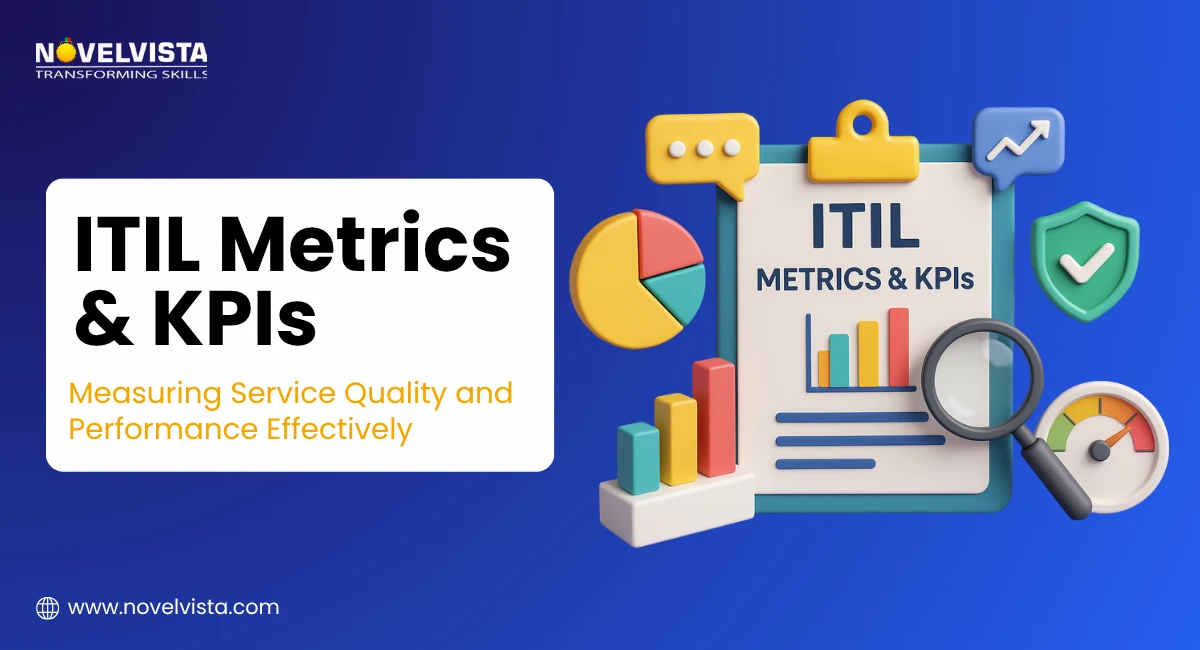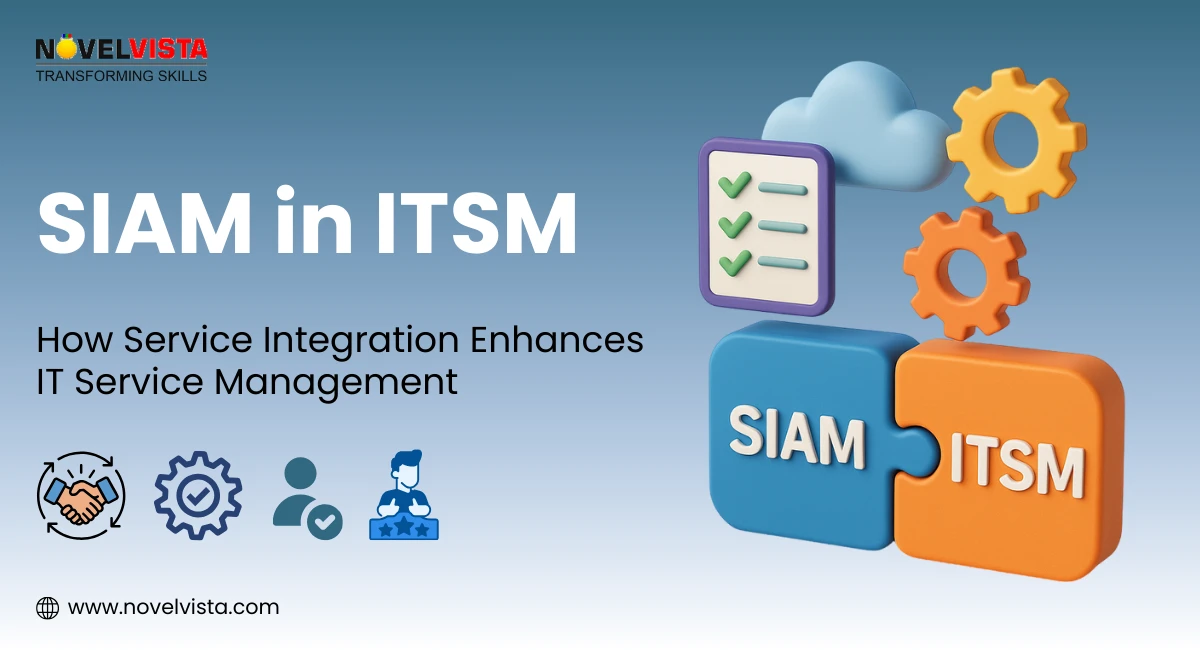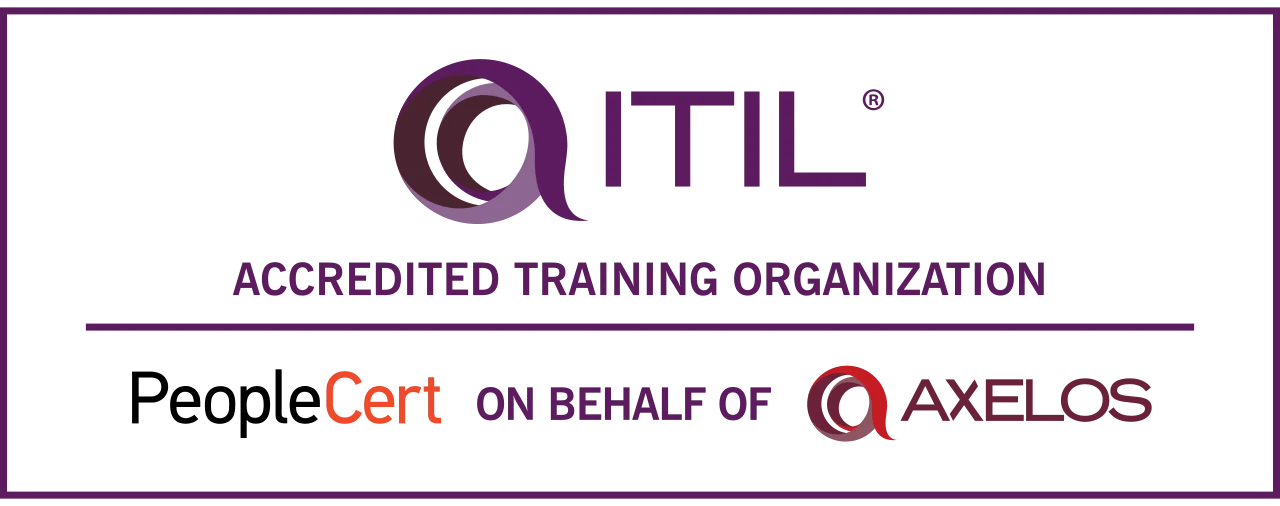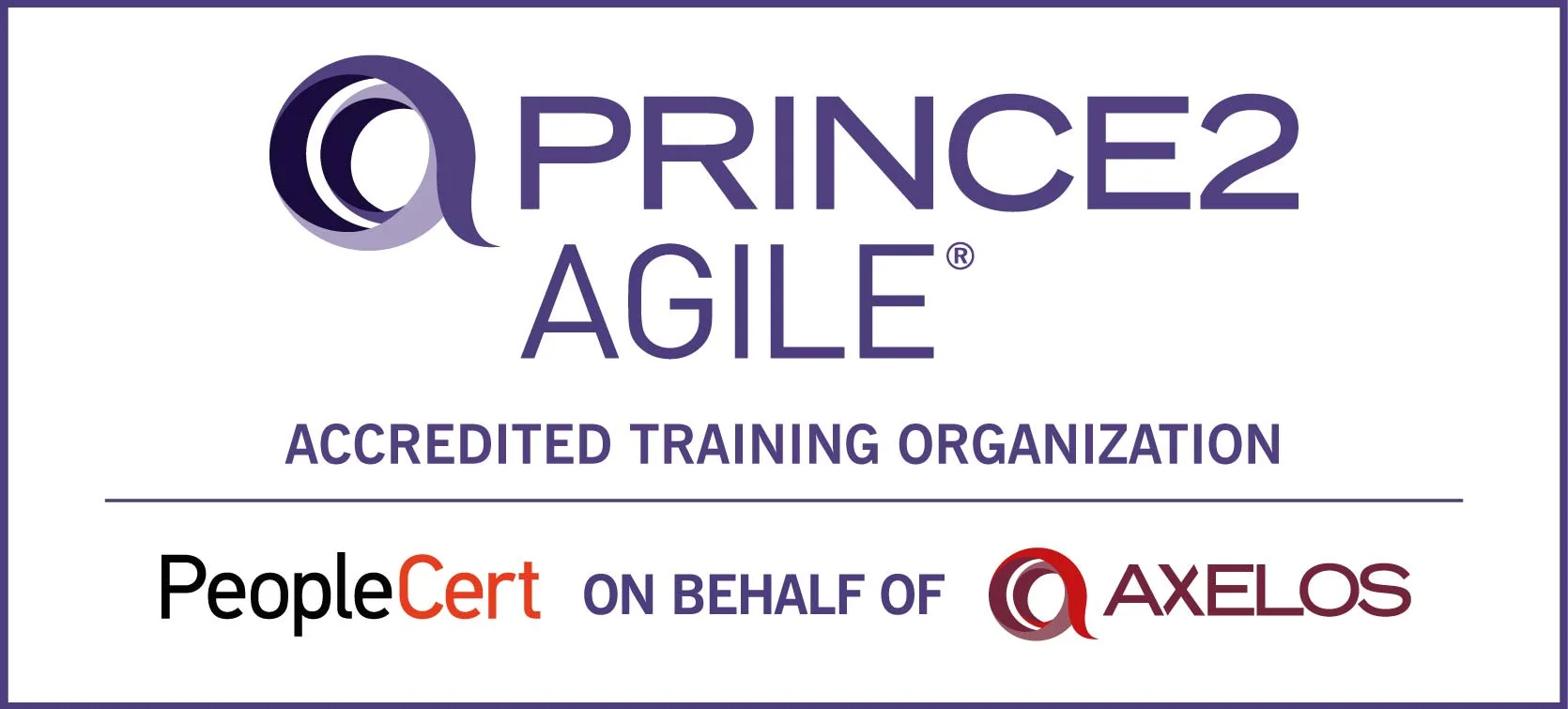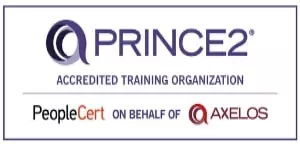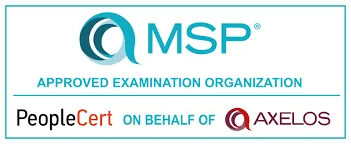- What Is ITIL 4 Service Value Chain?
- Six Core Activities of the ITIL 4 Service Value Chain
- Understanding the ITIL 4 Value Stream
- How the ITIL 4 Service Value Chain Works
- Guiding Principles in ITIL 4 within the Service Value System
- Outputs from the Service Value Chain According to Each Activity
- Benefits of the ITIL 4 Service Value Chain
- Conclusion: Connect Every ITIL Activity to Real Value
Organizations often focus heavily on IT processes but miss the bigger picture — delivering true end-to-end value. The Service Value Chain ITIL helps bridge this gap, showing how every activity contributes to creating customer value. In this guide, we’ll break down ITIL 4 Service Value Chain Activities, components, and outputs, giving you practical insights, real-world examples, and a downloadable Service Value Chain PDF to track your learning quickly.
Whether you’re an IT professional, manager, or aspiring ITIL practitioner, understanding the Service Value Chain ITIL will help you connect daily tasks to measurable business outcomes.
What Is ITIL 4 Service Value Chain?
The ITIL 4 Service Value Chain Definition is simple: it’s a flexible model that transforms demand into value through interconnected activities within the ITIL 4 Service Value System (SVS). Each activity relies on ITIL practices to ensure outcomes align with customer needs.
Key Characteristics of the ITIL 4 Service Value Chain
- Interconnected: Activities are linked, ensuring smooth handoffs and integrated value delivery.
- Flexible: Can adapt to different business models, technologies, and service types.
- Value-Driven: Focuses on achieving outcomes that matter to the customer, not just completing tasks.
- Foundation for Value Streams: Forms the base on which ITIL 4 Service Value Chain Components operate within value streams.
- Supported by Practices: Leverages ITIL practices like Incident Management or Change Enablement to achieve results efficiently.
Six Core Activities of the ITIL 4 Service Value Chain
Here’s an overview of the ITIL 4 Service Value Chain Activities and how they contribute to delivering real value:
1. Plan
The Plan activity aligns organizational strategy, goals, and objectives. It ensures that all service initiatives support business priorities. Planning includes defining service policies, creating roadmaps, and identifying improvement opportunities to drive long-term value.
2. Improve
Improve focuses on continuous assessment and refinement of processes, services, and performance metrics. Using data from operations and feedback, teams make iterative improvements that enhance efficiency, quality, and customer satisfaction.
3. Engage
The Engage activity is all about building relationships with stakeholders. It captures user needs, manages expectations, and gathers feedback. Effective engagement ensures services remain relevant, adopted, and aligned with business outcomes.
4. Design & Transition
Design & Transition creates new or modified services that meet business and user requirements. It includes service design packages, release planning, and testing before deployment, ensuring services are robust, compliant, and ready for delivery.
5. Obtain/Build
The Obtain/Build activity ensures all necessary resources, tools, and components are secured and ready for service delivery. This includes acquiring hardware, software, and other resources while verifying their quality and compatibility for seamless operations.
6. Deliver & Support
Deliver & Support handles actual service execution and user support. It manages incidents, service requests, and routine operations while maintaining system reliability and customer satisfaction. This activity ensures the services promised during planning and design are effectively delivered.
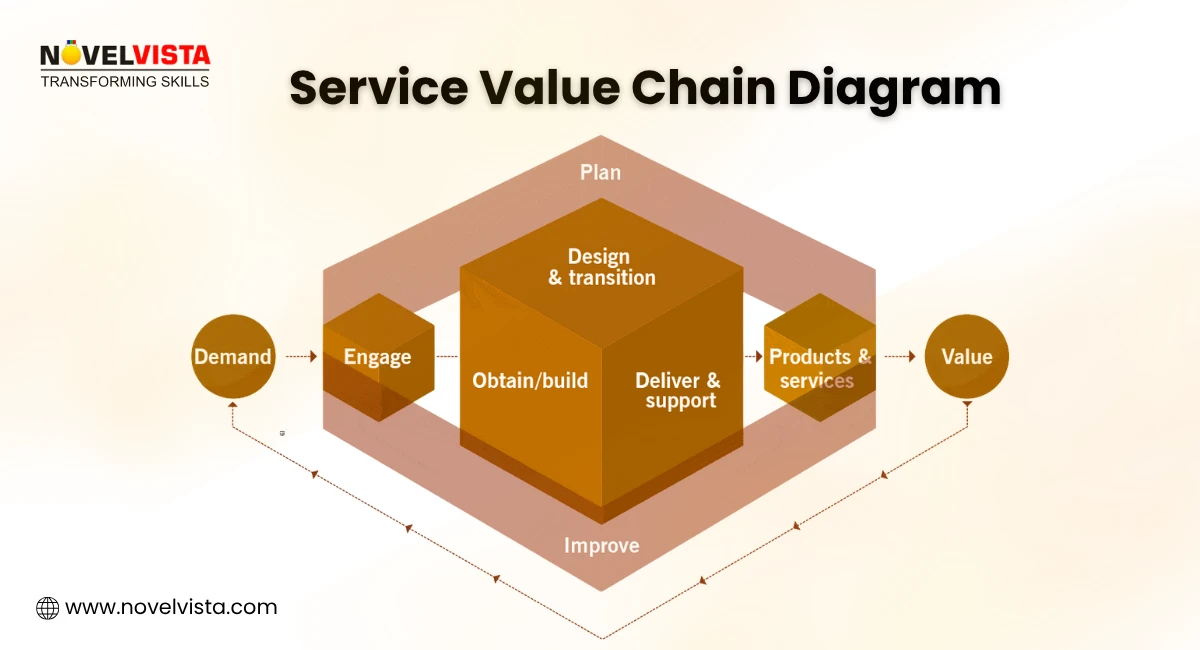
Understanding the ITIL 4 Value Stream
A Value Stream is a set of interconnected activities within the Service Value Chain ITIL that work together to deliver specific outcomes. Think of it as a map showing how value flows from initial demand to the final customer experience. By visualizing value streams, organizations can identify bottlenecks, ensure smoother handoffs between teams, and eliminate waste.
Mapping value streams also helps align IT activities with business priorities. For example, a software release value stream might include steps from planning, designing, and building, to testing, deployment, and support. Each step contributes to the outcome: a functioning, user-ready application. Understanding value streams makes it easier to optimize processes, improve efficiency, and deliver consistent value to customers.
Download: ITIL 4 Practices Cheat Sheet for Service Managers
Master ITIL 4’s Service Value System with ease. Get a concise cheat sheet to align every practice with real
service delivery goals.
How the ITIL 4 Service Value Chain Works
The ITIL 4 Service Value Chain Diagram illustrates how six core activities—Plan, Improve, Engage, Design & Transition, Obtain/Build, and Deliver & Support—interconnect to turn demand into value. In practice, each activity’s output serves as input for the next, creating a continuous loop of value creation.
- Plan defines strategy, goals, and improvement opportunities. Its outputs guide Design & Transition, ensuring services meet business requirements.
- Engage collects feedback and requirements from stakeholders, feeding insights into Plan, Improve, or Design & Transition.
- Obtain/Build prepares the resources, components, and tools required for service delivery, which Deliver & Support then executes.
- Improve monitors performance, analyzes metrics, and feeds recommendations back into all activities to enhance services continuously.
This diagram emphasizes flow and integration: no activity works in isolation. By connecting the ITIL 4 Service Value Chain Components with practices like Incident Management or Change Enablement, organizations ensure reliable, efficient, and customer-focused service delivery. The cycle repeats as feedback and lessons learned drive ongoing improvements.
Guiding Principles in ITIL 4 within the Service Value System
ITIL 4 Guiding Principles help organizations make informed decisions across all ITIL 4 Service Value Chain Components:
- Focus on Value: Ensure every action contributes to customer outcomes.
- Start Where You Are: Use existing processes and tools as a foundation.
- Progress Iteratively with Feedback: Make small, manageable improvements.
- Collaborate and Promote Visibility: Encourage teamwork and transparency.
- Think and Work Holistically: Understand interdependencies in the value chain.
- Optimize and Automate: Streamline processes for speed and efficiency.
Related: ITIL 4 Framework: Governance, certification, and core concepts
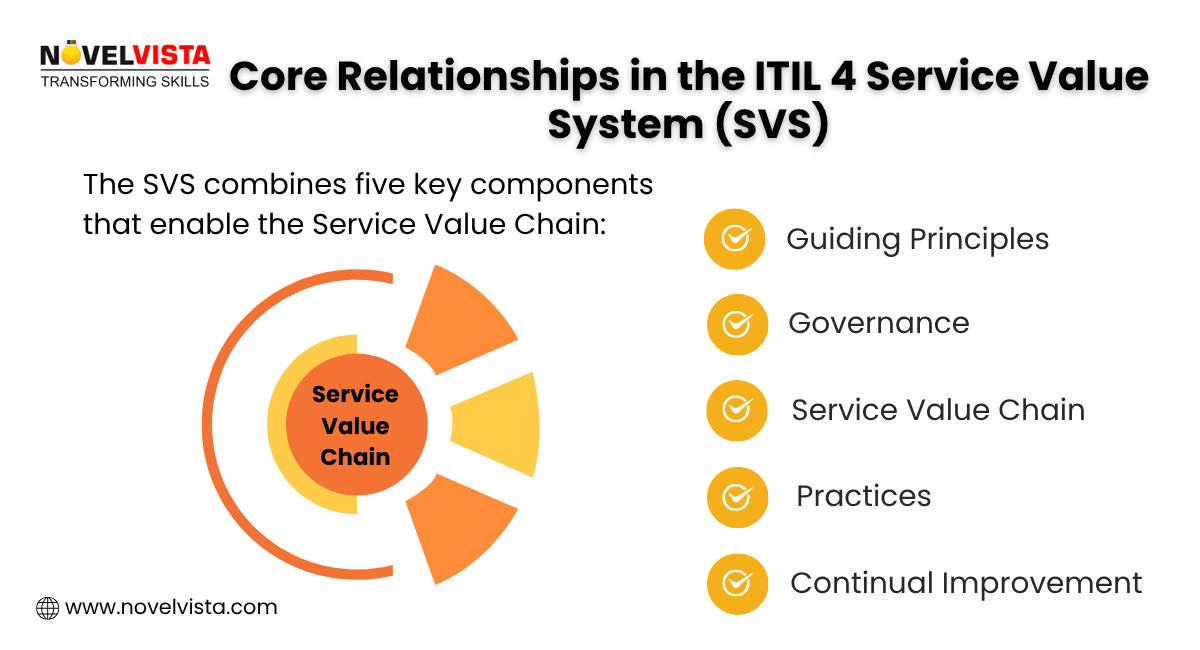
Outputs from the Service Value Chain According to Each Activity
Activity |
Key Outputs |
Plan |
Strategic direction, roadmap, improvement initiatives |
Improve |
Performance reports, improvement actions, updated metrics |
Engage |
Stakeholder feedback, service requests, requirement documentation |
Design & Transition |
Service design packages, release plans, configuration documentation |
Obtain/Build |
Built components, tested solutions, resource availability |
Deliver & Support |
Service delivery reports, resolved incidents, customer satisfaction data |
Real-World Examples
Scenario |
Activities Involved |
Outcome |
Launching a new IT helpdesk portal |
Plan → Design & Transition → Deliver & Support |
Improved user experience, faster incident resolution |
Cloud migration for a retail platform |
Obtain/Build → Improve → Deliver & Support |
Increased uptime, scalability, and performance |
Service upgrade based on feedback |
Engage → Improve → Transition |
Enhanced reliability, better customer satisfaction |
Benefits of the ITIL 4 Service Value Chain
- Better collaboration across teams and departments
- Consistent value delivery aligned with business goals
- Enhanced visibility and accountability across processes
- Continuous improvement through feedback loops
- Optimized performance with reduced downtime
- Customer-focused outcomes driving satisfaction and loyalty
Also Read: Benefits of ITIL 4 Certification
Conclusion: Connect Every ITIL Activity to Real Value
The Service Value Chain ITIL is more than a framework—it’s a blueprint for creating measurable business value. By understanding ITIL 4 Service Value Chain Activities, mapping value streams, and applying ITIL practices effectively, organizations can align people, processes, and technology toward shared goals. This approach ensures services are not only delivered efficiently but also continuously improved based on feedback and performance metrics.
Embracing the ITIL 4 Service Value Chain fosters collaboration, transparency, and customer-centricity, making every service interaction purposeful. With this knowledge, teams can optimize performance, reduce downtime, and consistently deliver outcomes that truly matter to the business and its customers.
Next Step: Become ITIL 4 Certified with NovelVista
Take the next step toward mastering ITIL 4. Enroll in NovelVista’s ITIL 4 Foundation Certification Training to learn from experts, gain practical insights into Service Value Systems, guiding principles, and real-world service management. Strengthen your ITIL skills and bring tangible value to your organization.
Frequently Asked Questions
Author Details

Mr.Vikas Sharma
Principal Consultant
I am an Accredited ITIL, ITIL 4, ITIL 4 DITS, ITIL® 4 Strategic Leader, Certified SAFe Practice Consultant , SIAM Professional, PRINCE2 AGILE, Six Sigma Black Belt Trainer with more than 20 years of Industry experience. Working as SIAM consultant managing end-to-end accountability for the performance and delivery of IT services to the users and coordinating delivery, integration, and interoperability across multiple services and suppliers. Trained more than 10000+ participants under various ITSM, Agile & Project Management frameworks like ITIL, SAFe, SIAM, VeriSM, and PRINCE2, Scrum, DevOps, Cloud, etc.
Course Related To This blog
ITIL4 Specialist Monitor Support and Fulfil Certification
ITIL4 Specialist Acquiring & Managing Cloud Services
ITIL® 4 Strategic Leader Digital And IT Strategy (DITS)
ITIL® 4 Specialist High Velocity IT
ITIL® 4 Strategist Direct, Plan & Improve
ITIL® 4 Specialist Create Deliver & Support
ITIL® 4 Foundation Certification
Confused About Certification?
Get Free Consultation Call

